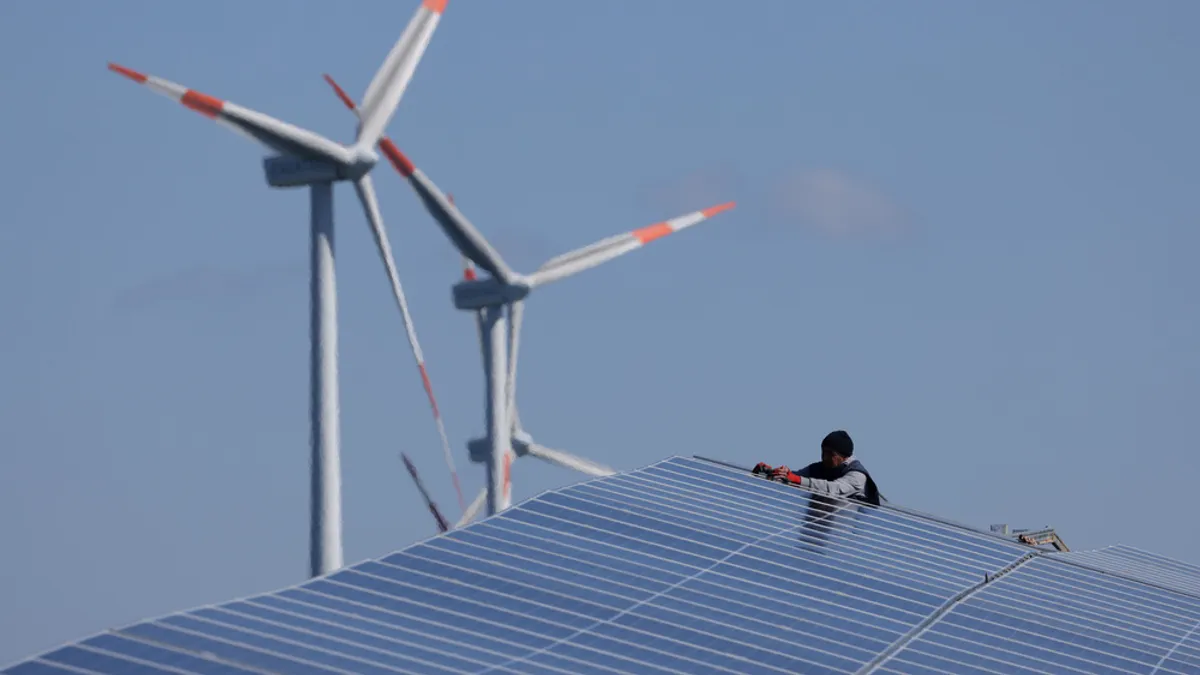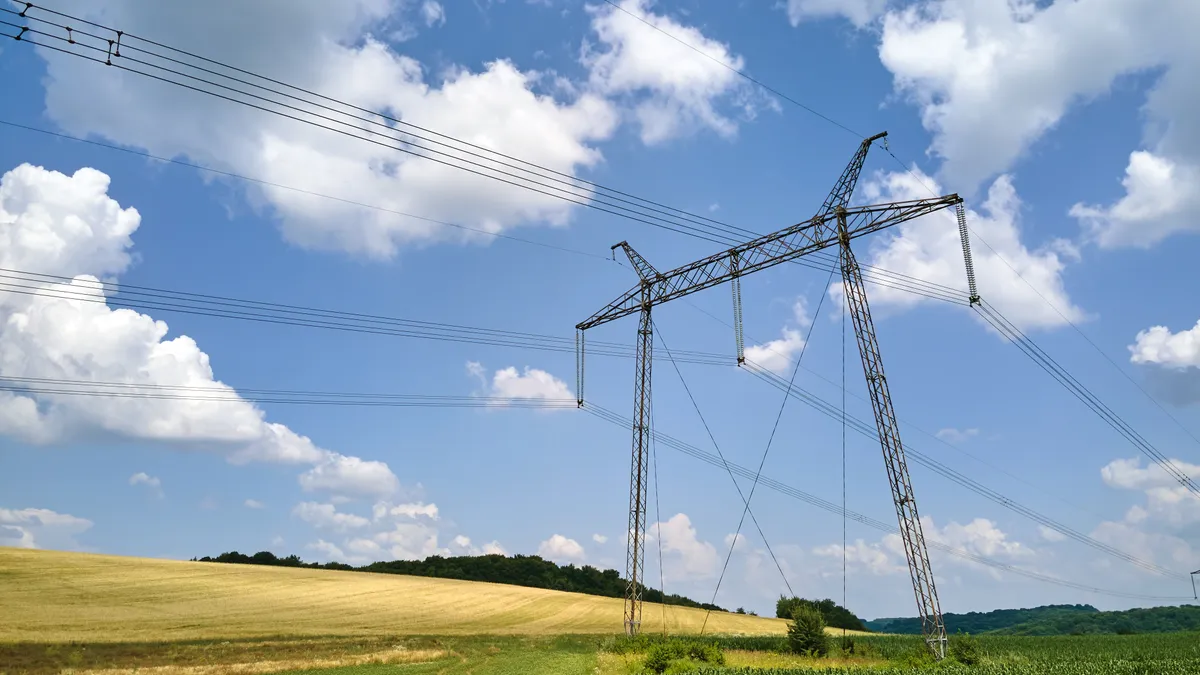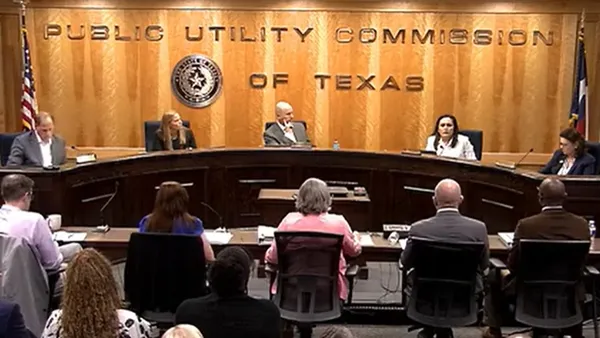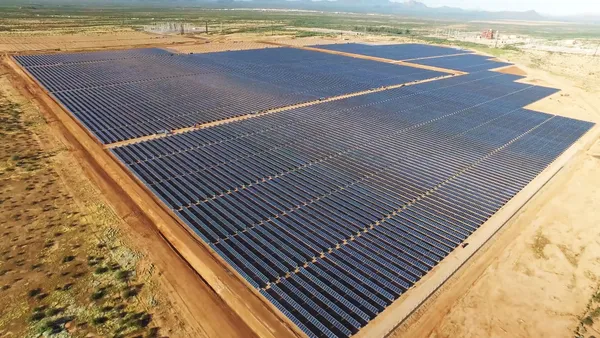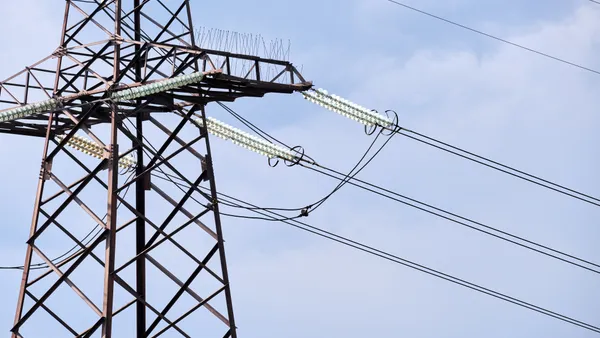Energy delivery is in the throes of a massive transformation. Utilities are decarbonizing, decentralizing and modernizing the grid. They are rapidly replacing their old processes and technology with new approaches. Nearly everything they do relies on location. Thus, GIS and its Modern Network Management capability provide the foundation for this technology transformation.
Yet without good data, the mission falls far short of expectations. This paper is a story about innovation and how utilities change their field mobility approach. How capturing accurate data from the field provides a sort of self-healing process for continuously improving. Then the power of analytics and the promise of the energy delivery system can be kept.
Mobile workers need modernization, too
Every year, utilities are faced with balancing more competing factors. They must maintain profitability and deal with customer service issues, safety and equity considerations. New regulations require immediate attention. Today, Mother Nature challenges operations at an alarming pace. Yet utilities still must keep the lights on. They must connect to the customer and restore power when the light goes out or the gas shuts down.
With this delicate balance, utilities can no longer do things the old way. They must innovate in high-profile ways, such as adopting the latest in artificial intelligence, and mundane ways, such as repairing fallen wires, replacing worn-out equipment and updating their records.
The delicate balance of competing factors impacts the mobile workforce as much as any. They are on the front line and impact costs, reliability, equity and compliance. All the while, they deal with the shifting climate challenges. Their work is dangerous, so they must take precautions to do their jobs safely.
Workers also contend with miserable weather, wretched traffic and annoyed customers. Their success depends on real-time awareness. Clumsy paper maps and poor data inhibit awareness, interfering with collaboration between workers and the rest of the corporation. Because situations can change quickly and depend on location, GIS is vital. GIS provides immediate access to asset condition and location information. It eliminates job site surprises and allows simple, accurate, timely reporting of network status and surrounding situations.
Incomplete and out-of-date information causes job delays, putting utilities at greater risk for accidents and mistakes. This lack of timely data increases costs, lowers output and wastes time. The results are longer outage times, customer frustration and regulatory agency fines. GIS as a source of high-quality location data boosts productivity, lowers costs and preserves customer satisfaction.
Japan’s Tottori Gas is a prime example of innovation in using mobile GIS technology. It delivers natural gas to customers in Tottori City, the capital of Tottori Prefecture. Its former mapping solution lacked features that offered employees access from mobile devices. To remedy the situation, Tottori Gas implemented an ArcGIS-based mobility solution. The new company-wide mobile app provides information sharing and gives employees gas network data access across the entire enterprise. Read the complete story here.
Japan’s Tottori Gas uses GIS mobility apps to locate assets.
GIS mobility removes obstacles so workers can do their best
The action at a utility happens outside the safe confines of headquarters. Therefore, innovation for the mobile worker is critical. The pulse of field operations beats under and above the city streets. It occurs in backyards, remote expanses and barbed wire enclosures. The work can be deadly, so working safely is job one, not only for the employees but also for the community where the work is performed. The more workers know, the safer they can be while working. Making sure they fully understand their surroundings is the key to their safety. That means knowing not only about the network assets but also what factors impact utilities and employees. Utilities should consider questions such as, what are the conditions in the field? Are there sensitive areas to avoid? Are there hazards lurking around the corner? Are there upset customers?
Field operations needs real-time answers
Utilities rely solely on mobile workers to ensure the data in the field is accurate. Their diligence in verifying such information preserves data quality for the workers who follow them. Mobile work involves various tasks, including inspection, maintenance, repair and construction. Workers perform cleanup, restoration, vegetation management, troubleshooting, equipment setting oversight and valve exercising. This work directly impacts reliability, customer service, company reputation and costs. And it all happens somewhere.
Location is at the heart of field activities. Utilities must always know where crews, assets and customers are located, and workers need to be informed of real-time traffic, weather conditions and possible threats. If workers can access location intelligence in the field, they are more likely to make decisions faster and deliver better customer service. GIS spatial analysis can lead on-site workers to adjust their attitudes about the execution of their work.
Utility workers want to do a good job. They are skilled at hanging transformers, setting poles and replacing gas valves. The more time they spend doing this work, the better. Time deciphering cluttered maps is a distraction from doing their job. They need easy-to-understand information on field and asset conditions and a fast way to communicate data to the corporation.
GIS mobility solutions help workers focus on their jobs and connect them to the big picture, removing barriers so they can get to work.
Ameren’s innovation solves thorny mobility issues
Ameren, an electric and gas utility headquartered in Saint Louis, Missouri, employs more than 9,000 people and delivers services to 2.4 million electric customers and more than 900,000 natural gas customers in Missouri and Illinois. Previous field mapping solutions required users to be online or deliver stale data from last quarter. Ameren implemented an innovative approach to field mobility. It deployed an Esri-based partner solution called EpochField, running on either Windows 10, Apple iOS, or Android OS. It is fully functional offline or online. The solution is fully integrated with ClickSoftware, an automated mobile workforce management solution. Read the full story.
The Ameren field mobility innovation works both online and offline.
More than utility assets
Mobile workers face numerous challenges and obstacles. GIS in the hands of mobile workers provides ready access to all kinds of data about workers’ surroundings, helping them understand the conditions they will face as they approach their work. Certainly, much of the mobile work consists of collecting vital information about utility assets. However, access to hazardous situations, such as potential landslide-prone areas, locations of poisonous snakes and areas subject to flash flooding, can save lives. In addition, utility workers must be aware of sensitive areas such as vegetated wetlands, historic sites, ancient burial grounds, and endangered species habitat. GIS can consume data from governments, public safety records and other non-utility sources and combine those records with utility data. Workers or vehicles encroaching a vegetated wetland will incur hefty fines and expensive mitigation actions.
El-Paso Electric’s GIS collects environmentally sensitive areas for their mobile workers
El-Paso Electric (EPE) operates 1,800 miles of power lines that traverse many sensitive environmental resources. Environmental concerns frequently delay routine maintenance activities. The utility needed a better way to ensure that crews maintained compliance while performing their work. EPE worked with Westland Resources Inc. to create a mobile GIS app to help identify sensitive environmental zones. This app improved regulatory compliance and increased the productivity of the utility’s workforce.
El Paso Electric’s mobile app tracks sensitive environmental zones.
Rapid communication, collaboration and coordination during emergencies is vital
The famous thought leader Simon Sinek once quipped that having more information is always better than less. This adage is especially true during emergencies. Mobile GIS provides workers with real-time information from a utility’s operational systems, such as SCADA and ADMS. In addition, the data collected in the field can be immediately viewed throughout the enterprise for rapid decision-making using GIS dashboards synced with the mobile GIS.
Mississippi’s Cooperative Energy innovated its approach to emergency response by implementing a mobile GIS with rapid data capture and publishing this data to the enterprise via GIS dashboards. Cooperative Energy generates and transmits power for 12 electric cooperatives. It provides safe and reliable electricity to 432,000 members. These member-owners are at the heart of everything Cooperative Energy does, including their response to storms such as hurricanes and tornadoes. During adverse conditions, the damage assessment process consumed precious time. Communicating and prioritizing the resultant information added additional steps. Often, delays and miscommunication resulted.
Collected damage information is instantly visible in the storm center.
Cooperative Energy innovated its approach to damage assessment using mobile GIS. It implemented ArcGIS QuickCapture to rapidly and conveniently send real-time storm damage observations back to the office. It displays the collected information on ArcGIS Dashboards. Consequently, damages are instantly visible to office personnel, management in the storm center, and all field crews.
Innovation of the mundane
People might think of inspecting assets as a mundane activity. Inspection conjures up an image of someone with a yellow pad and a number 2 pencil walking down the street, checking out the condition of a pole or a gas meter. Yet, the lack of quality inspection often results in asset failures. And, of course, inspection is intimately dependent on location. The more utilities understand their assets, the better they can proactively improve operations. Paraphrasing Simon Sinek’s quote, the more you know about the condition of your assets, the better decisions you can make about maintenance and replacement. Utilities have a huge number of distributed assets. Collecting data about those assets can be tedious, time-consuming, and error-prone. GIS streamlines this process.
Muscat Electricity Distribution Company (MEDC) digitally transformed inspections with GIS
MEDC delivers power to the Governorate of Muscat, the capital of Oman. It serves over 450,000 customers and owns nearly 12,000 distribution transformers. Managing its distribution substations was one of MEDC’s critical activities. Broad use of paper forms formerly ruled that process. To ensure the health of the equipment, crews must perform regular inspections. Huge concerns were insulating oil leaks, broken equipment and corrosion. This process was expensive and time-consuming. In addition, the crews had to carry cameras and clumsy paper maps and forms. MEDC transformed its substation inspection process by leveraging an Enterprise GIS, mobility applications and GIS-based dashboards. MEDC doubled the number of inspections per worker daily, providing more data for management and, ultimately, a better operating environment, lowering failures of critical assets. Click here for the complete story.
MEDC’s innovative use of a GIS-based Dashboard for managing transformer station inspections.
GIS mobility sparks continuous improvement of utility data quality
Getting data immediately from where it is created, captured, and confirmed in the corporate GIS removes the historic barriers plaguing utilities for decades. Paper processes have handcuffed transformation, allowing data inaccuracies to fester within the corporate GIS. GIS mobility solutions eliminate paper backlogs of data. They arm workers with the information they need to improve productivity, safety and data governance. Utilities indeed must balance so many competing factors. A solid understanding of what goes on in the field from an equipped mobile worker provides the utility with critical information to balance competing factors.
These stories are just a few of the many about how utilities have used GIS mobility to continuously improve their information base. Curious to learn more? Read up at this link.




